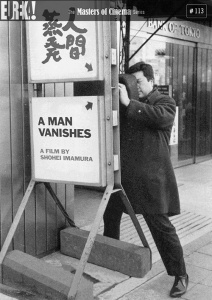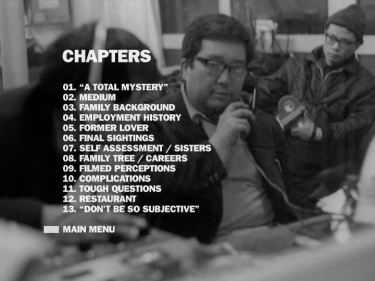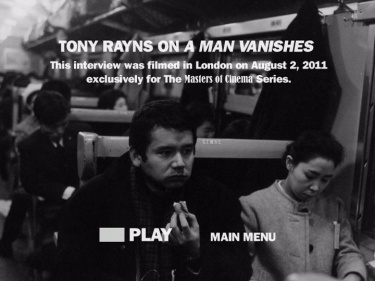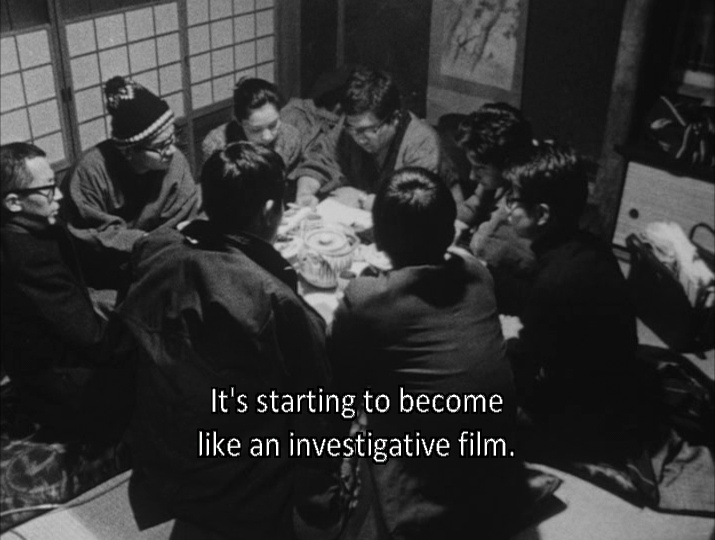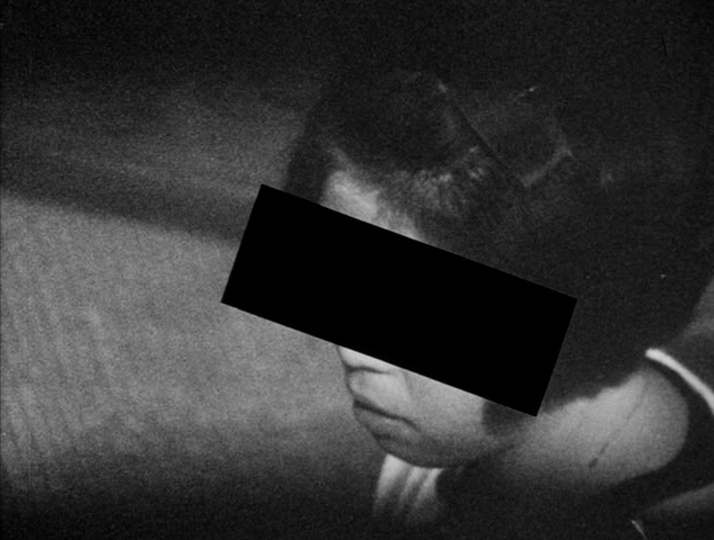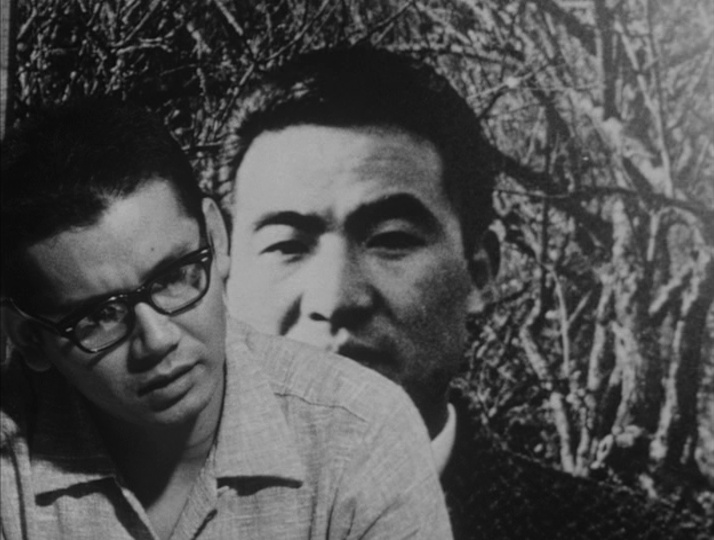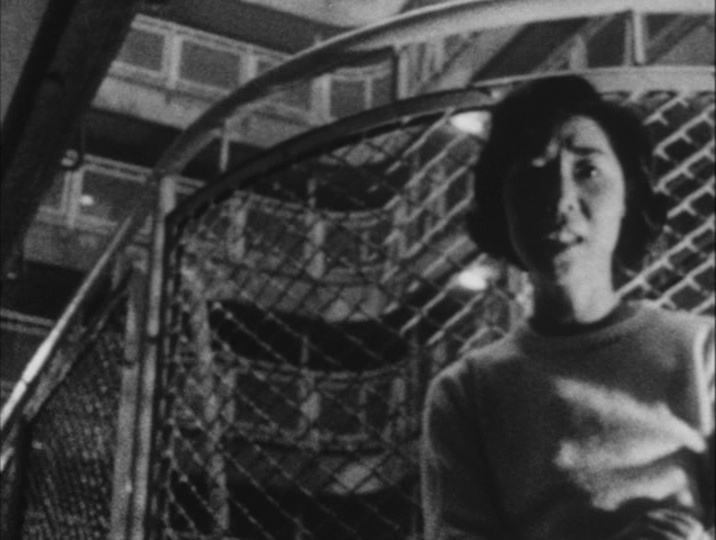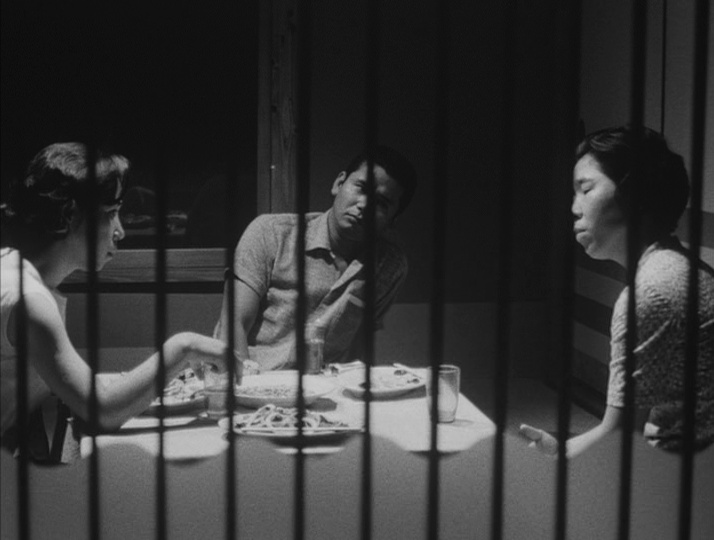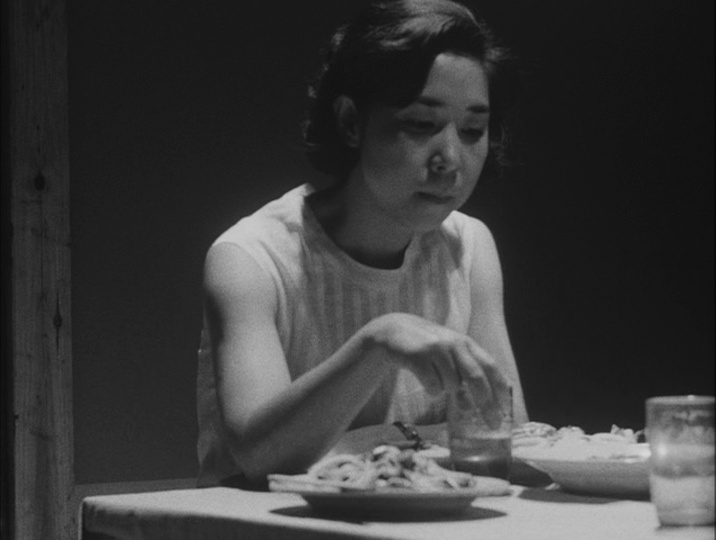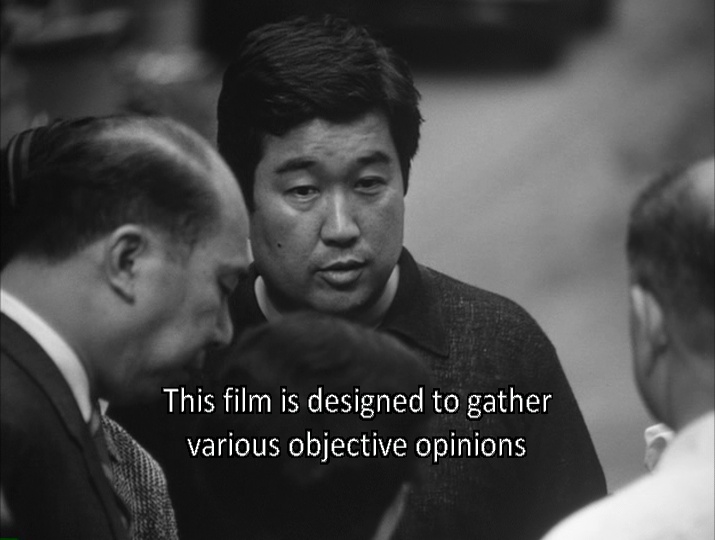![]()
![]()

![]()
![]()
|
Search DVDBeaver |
S E A R C H D V D B e a v e r |
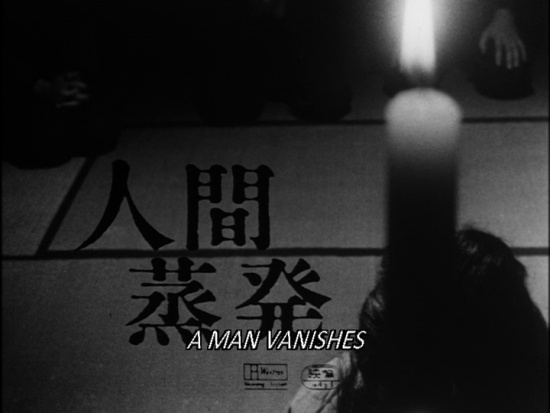
(aka "Ningen J˘hatsu" )
directed by Sh˘hei Imamura
Japan 1967
|
Oshima Tadeshi is one of the 91,000 citizens to disappear into thin air yearly in Japan. A film crew has selected the seemingly average case of this seemingly average man - a plastics salesman from the country taken in by his employers as family - case as their focus and find several possible reasons as to why he might have disappeared, but no definitive answer. He had embezzled a substantial sum of money from his company two years before, but it had been paid back by docking his paycheck and he was not fired. Could he still be stricken by guilt? In addition to his fiancee Yoshie (nicknamed "The Rat" by the filmmakers) who has joined the film crew to find him, he had a mistress who might have gotten pregnant by him. There is also the suspicion of a secret relationship between Oshima and Yoshie's timid older sister Sayo (a failed geisha), and inquiry into this thread reveals that not everyone is quite who they present themselves to be in front of the camera. Although distributed theatrically by Nikkatsu, A MAN VANISHES was Shohei Imamura's first independent production for his newly founded Imamura Films in collaboration the Arts Theatre Guild (an offshoot of Towa that had been geared towards the distribution of foreign films in Japan, and had just started moving into low budget feature film production). Although it presents itself as an investigative film about the whereabouts of Oshima, Imamura reveals himself to be far more interested in the portrait of the character that emerges through the interviewees (is he a ladies man or "a little wet"? a suave salesman or incompetent? youthful or middle-aged? guilt-stricken or fun-loving? was he running from obligation or his own fears of inadequacy?), sometimes through the use of hidden cameras and tape recorders (the wild sound of these sequences was impossible to synchronize to the image) and censor bars over the faces of those who did not consent to filming. The film actually becomes more interesting when it starts to ferret out the character of Yoshie - who Imamura claims used them and the camera as much as they used her - far from the demure and fragile persona she presents to the camera (although apparently far less monstrous than she actually was off-camera). Imamura weaves the fictionalized narrative of the documentary not only through the selection of images and sound bytes - not to mention the minimalist musical interjections of Toshir˘ Mayuzumi (REFLECTIONS IN A GOLDEN EYE) - but also by asking leading questions that allow him to pursue threads of his own interest (although one gradually discovers how much more adeptly Yoshie is at this method of eliciting desired responses). Despite the contradictory viewpoints and consultations of mediums, this is no RASHOMON, and Imamura's reveals of the constructed fiction of the documentary feel a shade academic (through heated exchanges in a room revealed to be constructed on a soundstage, and re-enactments on location with the actual participants), as does the summation that no one perspective can encompass the whole story; and yet, the viewer's mind does ping back and forth between the fiction of the filming and the reality that is being captured. When Imamura states that the crew's focus should return to determining Oshima's whereabouts, it is actually a clever device to end the film since they arrive at a point where they are only going in circles. A MAN VANISHES may have been scarce in distribution abroad because it possesses neither artfilm gloss or exploitation glitz, but it presents a frank and seedy view of Japan far more palpably than many of Nikkatsu's higher profile pictures. |
Posters
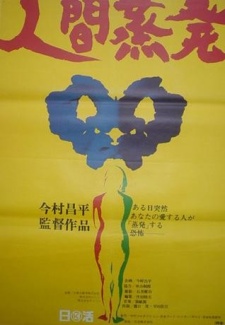 |
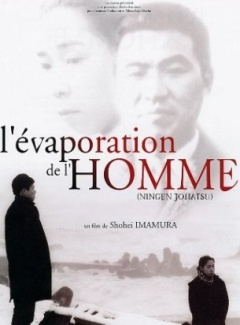 |
Theatrical Release: 8 July 1967 (Japan)
Reviews More Reviews DVD Reviews
DVD Review: Eureka Video (Masters of Cinema) - Region 0 - NTSC
Big thanks to Eric Cotenas for the Review!
| DVD Box Cover |
|
CLICK to order from: |
| Distribution |
Eureka Video Region 0 - NTSC |
|
| Runtime | 2:09:20 | |
| Video |
1.32:1 Original Aspect Ratio |
|
|
NOTE: The Vertical axis represents the bits transferred per second. The Horizontal is the time in minutes. |
||
| Bitrate |
|
|
| Audio | Japanese Dolby Digtial 2.0 mono | |
| Subtitles | English, none | |
| Features |
Release Information: Studio: Eureka Video Aspect Ratio:
Edition Details: Chapters 13 |
|
| Comments |
Although mastered from a new high-definition transfer, Masters of Cinema's dual-layer, progressive DVD has been encoded in NTSC resolution (their DVD of KWAIDAN was also NTSC) rather than the PAL standard for SD in Europe (there's also no PAL speedup). The mono track features clear dialogue and the spare musical cues come through forcefully. The English subtitles are error-free. MoC prefaces their presentation with a note that some audio could not be synchronized to the image, and that this has always been the case rather than a fault of the DVD transfer; however, they do not explain that the reason for this the hidden camera interviews were shot with wild sound. Tony Rains gives a mostly concise (he presents a lengthy quote from Imamura that redundantly repeats statements he himself made about the film moments before) analysis of the film that contextualizes it as the turning point from his Nikkatsu fictional work to the documentary work that would follow A MAN VANISHES. The director's son interviews him in an archival segment subtitled in both Japanese and English. The trailer rounds out the extras. A thirty-five page booklet features essays by the director, assistant editor, three vintage news clippings on the phenomenon of vanishings, and fellow Nikkatsu filmmaker Nagisa Oshima's (IN THE REALM OF THE SENSES) critique of Imamura's film. |
DVD Menus
|
|
|
|
|
|
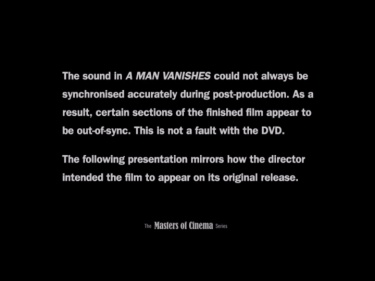 |
Screen Captures
Subtitle sample
|
|
|
|
|
|
|
|
|
|
|
|
Director Sh˘hei
Imamura directing the film within the film
|
|
| DVD Box Cover |
|
CLICK to order from: |
| Distribution |
Eureka Video Region 0 - NTSC |
|
![]()
![]()

![]()
![]()
 Search DVDBeaver |
S E A R C H D V D B e a v e r |
